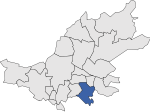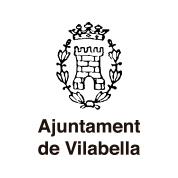

The Mossèn Romà Comamala Museum-Pinacotheca, located in the former Convent of the Dominican Sisters (19th century), houses a collection of religious paintings from the 16th century to the present day, compiled by Mossèn Romà Comamala, parish priest of Vilabella (1964-2000). This museum is unique in the region. From the old Convent where the pinacotheca is located, the Lourdes Grotto is still preserved. In the same building, you’ll find the Museum of the Countryside and Rural Life, which displays an ethnological collection of tools, implements, and furniture related to farming and life back then. There is also the Paleontology Room.
The streets of Vilabella have a singular gem: the votive chapels dedicated to Saint Anthony, Saint John, Saint Roch, Saint Magín, Our Lady of the Rosary, etc. Walk around the town and visit the New Church of Saint Peter, and right next to it, you’ll find the abbey, a large irregularly shaped building. If you make a reservation at the Town Hall, you can discover the museums and votive chapels with a guided tour.
The Castle (16th-17th centuries) (BCIN) is private. Inside, the courtyard with the angled staircase leading to the upper floor, which opens onto a large hall, stands out.
We recommend a five-kilometer circular route along the Gaià River. Start at the Salomó road and follow the Seven Bridges (the footbridges over the river), the Mill of the Middle, the Gatell caves, and the path of the Molinet. You can also take the corresponding guided route if you book it at the Town Hall.
